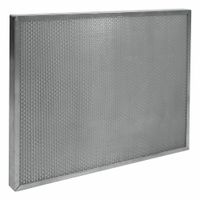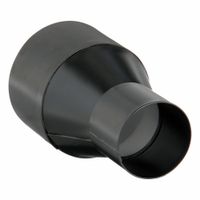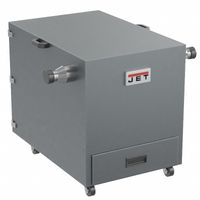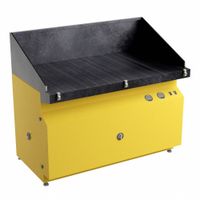Call +(254) 703 030 000 / 751 483 999 / 721 704 777
.....Read More
Frequently Asked Questions
What are the best metal dust collectors for metal fabrication shops?
The best metal dust collectors for metal fabrication shops are those that effectively capture fine metal particles, are durable, and meet the specific needs of the shop. Here are some top options:
1. **Donaldson Torit DFO Series**: Known for its advanced filtration technology, the DFO series offers high efficiency and long filter life. Its compact design saves space, and the downward airflow pattern enhances dust collection.
2. **Camfil APC Farr Gold Series**: This collector is praised for its modular design and high filtration efficiency. It uses HemiPleat filters, which provide a larger surface area for dust capture, making it suitable for heavy-duty applications.
3. **A.C.T. Dust Collectors**: These collectors are robust and versatile, with models like the ACT 2-8 offering customizable options to fit various shop sizes. They feature efficient pulse cleaning systems to maintain filter performance.
4. **Nederman S-Series**: Ideal for smaller shops, the S-Series is compact and quiet. It offers efficient dust collection with easy maintenance, making it a practical choice for operations with limited space.
5. **Baileigh Industrial DC-2100C**: This model is designed for medium to large shops, providing powerful suction and a large collection capacity. Its cyclone design ensures efficient separation of dust particles.
6. **JET JDC-501**: A more affordable option, the JDC-501 is suitable for smaller operations. It features a two-stage filtration system and a compact design, making it easy to integrate into existing setups.
When selecting a dust collector, consider factors such as the size of the shop, the volume of dust produced, and the specific types of metal being fabricated. Additionally, ensure compliance with local regulations regarding air quality and safety.
How do metal dust collectors work to keep workspaces clean?
Metal dust collectors work by capturing and filtering metal dust and particles generated during metalworking processes, ensuring a cleaner and safer workspace. These systems typically consist of several key components:
1. **Intake System**: The process begins with an intake system, often comprising hoods or ducts positioned near the source of dust generation. These capture the dust-laden air as it is produced.
2. **Airflow Mechanism**: A powerful fan or blower creates a suction force that draws the contaminated air into the collector. The airflow is designed to efficiently transport dust particles from the source to the collection unit.
3. **Filtration System**: Once inside the collector, the air passes through a series of filters. These filters are usually multi-stage, including pre-filters to capture larger particles and high-efficiency filters, such as HEPA or cartridge filters, to trap finer dust. The filtration system is crucial for removing harmful particles from the air.
4. **Dust Collection**: The filtered air is then expelled back into the workspace or vented outside, while the collected dust is deposited into a designated container or bin. This container can be easily removed and emptied, ensuring continuous operation.
5. **Safety Features**: Many metal dust collectors are equipped with additional safety features, such as spark arrestors to prevent fires, and sensors to monitor filter performance and airflow.
6. **Maintenance**: Regular maintenance, including filter replacement and system checks, is essential to ensure optimal performance and longevity of the dust collector.
By effectively capturing and filtering metal dust, these collectors help maintain air quality, reduce health risks, and prevent equipment damage, contributing to a safer and more efficient work environment.
What types of filters are used in metal dust collection systems?
Metal dust collection systems typically use the following types of filters:
1. **Cartridge Filters**: These are cylindrical filters made from pleated synthetic or cellulose media. They offer a large surface area in a compact size, making them efficient for capturing fine metal dust particles. Cartridge filters are often used in systems where space is limited.
2. **Baghouse Filters**: Also known as fabric filters, these are used in larger systems. They consist of long, cylindrical bags made from woven or felted fabric. Baghouse filters are effective for capturing larger volumes of dust and can handle high dust loads.
3. **HEPA Filters**: High-Efficiency Particulate Air (HEPA) filters are used when extremely fine filtration is required. They can capture particles as small as 0.3 microns with 99.97% efficiency. HEPA filters are often used in applications where air quality is critical.
4. **Cyclone Separators**: While not a filter in the traditional sense, cyclone separators are often used as a pre-filter stage. They use centrifugal force to remove larger dust particles from the air stream before it reaches the main filter, reducing the load on the primary filters.
5. **Electrostatic Precipitators**: These devices use an electric charge to remove particles from the air. They are effective for capturing fine dust and can be used in conjunction with other filters to enhance overall system efficiency.
6. **Wet Scrubbers**: These systems use a liquid to capture dust particles. They are particularly effective for capturing combustible metal dust, as the liquid can help prevent dust explosions.
Each type of filter has its own advantages and is chosen based on the specific requirements of the dust collection system, including the type of metal dust, the volume of dust, and the desired air quality.
How often should filters in metal dust collectors be replaced?
The frequency of replacing filters in metal dust collectors depends on several factors, including the type of dust being collected, the volume of dust, the type of filter used, and the operating conditions. Generally, filters should be inspected regularly and replaced when they show signs of wear or reduced efficiency.
For standard operations, a common guideline is to replace filters every 6 to 12 months. However, this can vary significantly:
1. **Type of Dust**: Fine or sticky dust may clog filters faster than coarse dust, necessitating more frequent replacements.
2. **Volume of Dust**: High production environments with large volumes of dust may require more frequent filter changes, potentially every 3 to 6 months.
3. **Filter Type**: High-efficiency filters, such as HEPA filters, may have different replacement schedules compared to standard filters. Always follow the manufacturer's recommendations.
4. **Operating Conditions**: Harsh environments or continuous operations can lead to quicker filter degradation.
5. **Pressure Drop**: Monitor the pressure drop across the filter. A significant increase indicates that the filter is clogged and needs replacement.
6. **Visual Inspection**: Regular visual inspections can help identify physical damage or excessive dust buildup, indicating the need for replacement.
7. **Manufacturer's Guidelines**: Always adhere to the specific guidelines provided by the dust collector and filter manufacturers.
Ultimately, establishing a routine maintenance schedule based on these factors and regular monitoring will ensure optimal performance and longevity of the dust collection system.
What are the safety features of metal dust collectors to prevent fires?
Metal dust collectors incorporate several safety features to prevent fires:
1. **Spark Arrestors**: These devices capture and extinguish sparks before they can ignite combustible dust, reducing the risk of fire.
2. **Explosion Vents**: Designed to relieve pressure and direct the force of an explosion away from personnel and equipment, minimizing damage and injury.
3. **Fire Suppression Systems**: Automatic systems, such as sprinklers or chemical suppressants, are installed to quickly extinguish fires that may start within the collector.
4. **Grounding and Bonding**: Proper grounding and bonding prevent static electricity buildup, which can ignite metal dust.
5. **Temperature Sensors**: These sensors monitor the temperature within the dust collector and trigger alarms or shut down the system if temperatures exceed safe levels.
6. **Inert Gas Blanketing**: Some systems use inert gases to displace oxygen, reducing the likelihood of combustion.
7. **Flame Retardant Filters**: Filters made from flame-retardant materials help prevent the spread of fire within the collector.
8. **Isolation Valves**: These valves close off sections of the ductwork to prevent fire from spreading through the system.
9. **Regular Maintenance and Cleaning**: Ensures that dust does not accumulate to dangerous levels, reducing the risk of ignition.
10. **Explosion-Proof Motors and Components**: Designed to operate safely in environments with combustible dust, preventing sparks and overheating.
11. **Airflow Monitoring**: Ensures that the system maintains proper airflow, preventing dust accumulation and potential ignition sources.
12. **Emergency Stop Mechanisms**: Allow operators to quickly shut down the system in case of an emergency.
These features work together to minimize the risk of fire and ensure the safe operation of metal dust collectors.
How do metalworking air filtration systems differ from dust collectors?
Metalworking air filtration systems and dust collectors serve distinct purposes in managing air quality in industrial environments, but they differ in their design, function, and application.
Metalworking air filtration systems are specifically designed to capture and filter out fine particulates, fumes, and mist generated during metalworking processes such as welding, cutting, grinding, and machining. These systems often incorporate high-efficiency particulate air (HEPA) filters or other advanced filtration technologies to effectively remove sub-micron particles and hazardous fumes from the air. They are crucial for maintaining a safe working environment by reducing exposure to harmful airborne contaminants that can pose health risks to workers.
Dust collectors, on the other hand, are generally used to manage larger particulate matter generated from processes like woodworking, bulk material handling, and other industrial operations that produce significant amounts of dust. These systems typically use bag filters, cartridge filters, or cyclone separators to capture and contain dust particles. Dust collectors are designed to handle high volumes of air and large particles, focusing on preventing dust accumulation and maintaining equipment efficiency.
In summary, the primary difference lies in their application and the type of contaminants they target. Metalworking air filtration systems are specialized for capturing fine particulates and fumes specific to metalworking processes, while dust collectors are more suited for handling larger dust particles from a variety of industrial activities. The choice between the two depends on the specific needs of the operation, the type of contaminants present, and the desired air quality standards.
What maintenance is required for metal dust collection and air filtration systems?
Maintenance for metal dust collection and air filtration systems involves several key tasks to ensure optimal performance and safety:
1. **Regular Inspection**: Conduct routine inspections to check for wear and tear, leaks, or any damage to the system components, including ducts, filters, and collection units.
2. **Filter Replacement**: Replace filters according to the manufacturer's recommendations or when they show signs of clogging or reduced efficiency. This includes primary filters and any secondary or HEPA filters used in the system.
3. **Cleaning**: Clean the dust collection units and ducts regularly to prevent buildup that can reduce efficiency and pose a fire hazard. Use appropriate cleaning methods such as compressed air or vacuuming, depending on the system design.
4. **System Calibration**: Periodically calibrate the system to ensure it is operating at the correct airflow and pressure levels. This may involve adjusting fan speeds or checking the integrity of ductwork.
5. **Motor and Fan Maintenance**: Inspect and maintain motors and fans, ensuring they are lubricated and free from obstructions. Check for unusual noises or vibrations that may indicate mechanical issues.
6. **Safety Checks**: Ensure all safety features, such as explosion vents or suppression systems, are functional and compliant with safety regulations. Test alarms and emergency shut-off systems regularly.
7. **Record Keeping**: Maintain detailed records of all maintenance activities, inspections, and any repairs performed. This helps in tracking system performance and planning future maintenance.
8. **Training**: Ensure that personnel involved in maintenance are properly trained and aware of safety protocols related to handling metal dust and operating the filtration system.
9. **Compliance**: Regularly review and ensure compliance with local and national regulations regarding air quality and industrial safety standards.
10. **Professional Servicing**: Schedule periodic professional servicing to address complex issues and perform comprehensive system evaluations.






